Five Turkish ‘Bayraktar TB2’ unmanned combat aerial vehicles are currently operating over Syria.
The Open Source Intelligence Twitter account SkyWatcher Intel often follows such flights in the region, if you don’t follow them then I’d suggest you go do that now if you’d like to see what’s going on as it goes on.
https://twitter.com/skywatcherintel/status/1359815628488642562
According to Scott Crino and Andy Dreby in ‘Turkey’s Drone War in Syria – A Red Team View‘, Turkey’s armed forces gained worldwide attention when its air force launched a remarkable and innovative airpower show-of-force against Bashir al-Assad’s Syrian Army.
As part of a combined air and ground operation, the Turkish air force used its Anka-S and Bayraktar TB2 drones to conduct hundreds of strikes against Syrian Arab Army units.


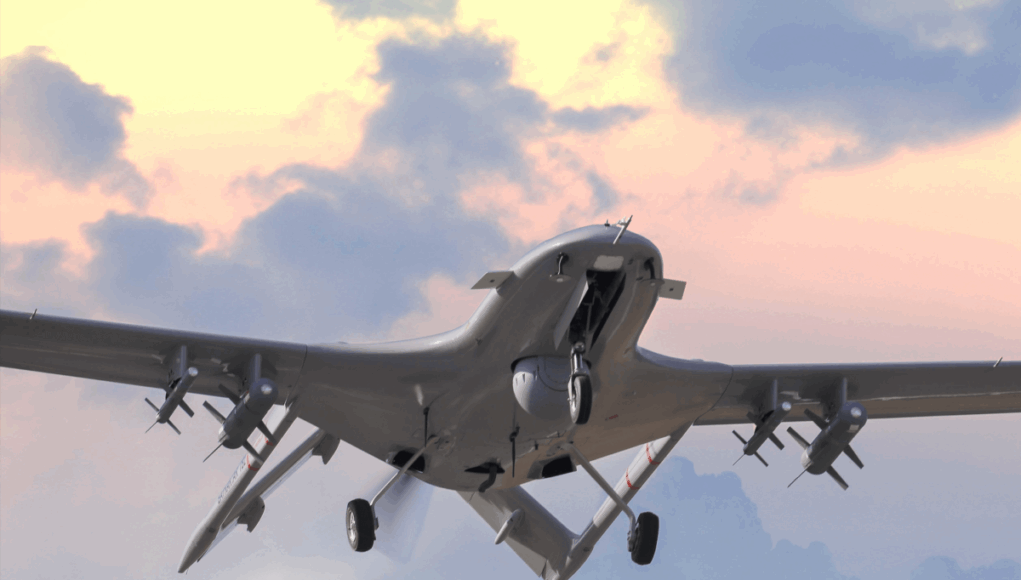

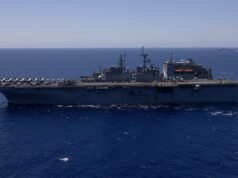
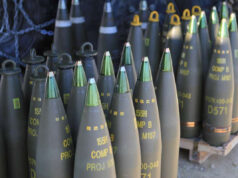
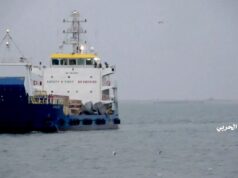


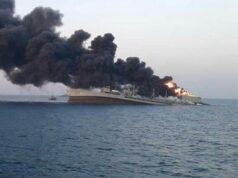
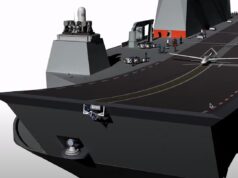

If we can see the drones on this website why doesn’t Assad just have someone watching it 24/7?
I think that if Assad decided to take out the Turkish UAVs, They should expect to be punished heavily by the Turks (like they did last Feb where after the Syrians killed 33 Turkish troops, Ankara hit back killing at least 329 (others cite over 3000) Syrian government troops ,destroying five helicopters, 23 tanks, 10 armoured vehicles 23 artillery and howitzers, five ammunition trucks, one SA-17 and one SA-22 air defence systems, three ammunition depots, two inventory depots and one headquarter building
When that happened the Islamist terrorists Turkey is supporting in the North west of Syria went on the counter attack and regained a lot of the land they had lost to the Syrians. So I suppose the Syrians are somewhat powerless against their larger neighbour and don’t want to end up losing troops, equipment and land by taking out a few UAVs
Interesting, the difference in approach between the US and Turkey with regards to design of their drones. The US want deniability and long endurance for the War on Terror. Turkey on the other hand doesn’t seem to mind who knows they’re throwing their weight around.
The difference in requirement means they can build cheaper drones and simply build replacements. This would also lend itself to rapid ongoing development as you simply replace the ones you lose with improved versions. Cheaper also means more units which gives you force depth, something the UK could do with.
I would suggest that the UK need a mix of drone types. US style systems so we can contribute and support the US / NATO where we need to, and simpler cheaper designs we can use in situations that do not require the apparently sneaky and expensive stealth drones. Sometimes is pays to be openly threatening, other times you need to be more sneaky about your threats…
Cheers CR
The US has a large variety of drones. RQ-11/RQ-20 size up to RQ-4/RQ-170 size. Variety of missions too.
CR wrote:
Turkey is a country to watch, Its current leader has made it quite clear he wishes to bring back the Ottoman empire (of sorts) back to life. Knowing that this would entail sanctions from Western nations, he set about building his own arms industry , which has resulted in
Turkish made Tanks (granted its based on the South Korean K2)
Turkish made Helicopter Gunships(based on the Italian Mongoose)
Turkish made Self propelled artillery (based on the South Korean K9)
Turkish made missiles (The SOM cruise missile looks very effective, a whole tranche of AAA, a line of AT missiles and the one which is the one to really look at but which the ‘Bayraktar TB2’ has gained all the credit is the small MAM (Smart Micro Munitions)
Turkish made Navy ships
Turkish made Rifle (7.62 at that)
Turkish made ECM (very effective in Syria and Armenia)
Once the Turks became virtually self reliant regards all things military they took to intervening in
Syria
Libya
Somalia
Armenia
and as of yesterday Iraq
Three Turkish soldiers killed in northern IraqAt least three Turkish soldiers have been killed during a new offensive against Kurdish fighters in northern Iraq, according to the Turkish defence ministry.
Turkey on Wednesday launched an operation, dubbed “Claw-Eagle 2”, against Kurdistan Workers’ Party (PKK) fighters in the northern Iraqi region of Dohuk.
Lets not forget how Ankara has issues with Cyprus/Greece/France has started to stick its oar into Lebanon (building a following in the north of the country as a foil to Hezbollah)
Also the Turks are looking at forming a military union with Pakistan and Malaysia with no doubt the likes of Azerbaijan and Qatar joining in.
The question that we should be asking is why? Erdogan like all despotic leaders wants to be remembered by History, The Ottoman Empire was dissolved on the 1st Nov 1922. How do you think the Turks would treat the person who brought it back to life on its 100 year anniversary. A new Empire which feels it is rightly positioned to become the leader of the Islamic world
The issue with drones is that they take time, money and resources to target and knockout. If we are talking about the larger drones, i.e. those generally that are fixed wing and not quad-copters etc. Then these are controlled via data-link either through a satellite relay or from direct line of sight. Either method makes it harder for your opponent to jam, as they have to be nearby or preferably between the transmitter and receiver to overpower the transmit signal with white noise or find some way to hack the control signal. Furthermore, there are only a few countries with the ability of knocking out satellites. So that leaves the direct kinetic method for everybody else.
Depending on the size of the drone and the engine it uses, they can be quite difficult to pick up at a suitable distance on infra-red sensors, due to a number of factors, such as clouds, rain etc. Which leaves radar as the best method for longer distance detection. High frequency radars will have a much better ability compared to lower frequency radars. As the drone is invariably made from shaped foam covered with fibreglass. The radar’s transmitted wave will generally pass straight through these airframes, giving them a very small radar cross section. Thus, you are reliant on higher frequency radars radiating off the metal components that are used to join the drone’s parts together, wiring, metal leading edge strips on propellers, the engine etc.
Then you have to find a method of taking out these types of drone. A Predator that flies between 2500 (0.8km) to 5000ft (1.5km) could be hit by a HMG, but something like the Reaper which flies above 8000ft (2.4km) or Protector that flies at 50,000ft (15km) will need something much more sophisticated. Warrior and Ajax using the CTA40mm autocannon with an elevation of +75 degrees, could be used in this low to medium altitude role, as it has an effective range around 4km. But then they would need a sensor that can search for and track the drone?
The short range air defence (SHORAD) system the Army uses is Starstreak 2. This can either be a single/triple MANPAD unit or the octuple mount as used on Stormer. This relies on a form of semi active command line of sight (SACLOS) missile guidance. Whereby two lasers paint a grid over the target and the operator keeps the target marked by some cross hairs. The missile uses a command guidance signal to make sure it stays within the laser grid heading towards the target. The Stormer has the air defence alerting device (ADAD). This is a passive imaging infrared system and gives the vehicle a 360 degree search and track sensor. Again, the operator still has to maintain contact on the target, through an electro-optical lens. The ADAD was an early iteration of the Typhoon’s Pirate IRST, but only operates in the one band rather than two. It will suffer the same issues all IR based detection systems have, with obscurants such as rain, clouds etc. The Starstreak 2 is more than adequate at taking out a medium altitude (sub 10km) drone just not the high altitude ones.
Which leaves us with Sky Sabre. The Sea Ceptor/Sky Sabre missile has range greater than 25km. It can engage targets higher than 50,000ft. However, it is a missile designed to engage highly manoeuvrable targets and be resistant to countermeasures. Therefore, it costs a lot.
As both Russia and Syria have found, there is a substantial cost in taking out these types of drone. Because they fly above the effective range of self propelled anti-aircraft guns (SPAAG). Drones like the Turkish TB2s require a missile to knock them down. Russia have been bragging recently that they shot down 19 TB2 type drones, using their Panstir system. But if a surface to air missile costs say £200K plus (guessimate), whilst the drone is only £100K, who is actually the winner? Yes, Turkey have lost a large number of hunter-killer surveillance drones, but Russia/Syria has forked out considerably more financially! Which is easier and cheaper to replace?
This is probably the reason why Russia has developed the 2S38 Dervaciya PVO SPAAG system. This is a weapon system that uses the BMP3 chassis, but mounts a 57mm auto-cannon, firing its 148 rounds at a rate of 120 rounds per minute, with an effective range of 6km. Unlike the Panstir, it doesn’t have surface to air missiles, for engaging targets at a longer distance. This SPAAG system doesn’t compare well to the BAe 57mm Mk110 system, which has an effective low level engagement range of around 8km. It also only uses programable proximity fused shells. Whereas the BAe gun can use the Ordinance for Rapid Kill of Attack Craft (OKRA) shell. This is a guided round that uses semi-active laser illumination to home in on, where BAe state it gives the weapon “a one shot, one kill” ability.
However, this 57mm/OKRA system is still really effective for sub 30,000ft (9.1km) targets. What is needed is a cheap, relatively unsophisticated surface to air missile. At the moment most drones will follow a route dictated by waypoints, with a ground operator monitoring its path. They don’t for instance vary their height much when flying this route. This certainly don’t fly evasive manoeuvres when near the target or use countermeasures. Therefore, the missile doesn’t need to be highly manoeuvrable, or use multi-band sensors to counteract jamming and decoys. It could be based on a CVR-7 or advanced precision kill weapons system (APWS) style unguided rocket. Both of these rockets when fitted with a semi-active laser seeker and paired with a guidance kit have shown they can hit moving ground targets. Both of these weapons have also shown during trials that they can engage drones, when launched from an aircraft. The problem they have is their relatively short range of around 16,4000ft (5000m) depending on the aircraft launch platform. To reach a higher altitude from ground level, they will need a much larger rocket engine.
What the modified un-guided rocket does show, is what is feasible with a modest outlay. A surface to air missile based around this concept, would be significantly cheaper for engaging medium to high altitude drones than a dedicated anti-missile missile like SeaCeptor/SkySabre. Yet, also cheaper than Starstreak at engaging lower altitude drones, leaving SeaCeptor/SkySabre or Starstreak for higher performance threats. Thus, Keep It Simple Stupid!
Why you say that “effective range” of 57 MK110 has the same meaning as the “effective range” of Russian 57?
I don’t think I did? The 57mm gun used in the 2S38 Dervaciya PVO SPAAG has a published effective range of 6km. Whereas, the BAe Mk110 57mm gun with 3AP ammunition has a published effective range of 8km. That is a 2km difference. What is more, the BAe Mk110 states that this effective range is against a low level target. From this statement you can extrapolate that the effective range against a target above low level is even further, which is based on simple physics.
From BAe’s blurb, the Mk110, which is based on the Bofors 57mm, has a barrel length of 70 calibres, i.e. 3990mm. The Russian SPAAG 57mm gun is a BM-57, which is an updated version of the famous AZP S60, it also has a 70 calibre barrel. Therefore, the difference between the Mk110 and BM57 performance is probably due to the shell size and the relative performance of the loaded charge. The Mk110 uses a 57 x 438mm cartridge, whereas the BM-57 uses a 57 x 348mm SR cartridge.